Huawei MatePad Pro 12.6 November 2022 update rolling out in Europe
Huawei Sound Joy smart speaker improves system stability with new update
Broadcom BK7235 processor combines with OpenHarmony
Huawei MatePad Pro 10.8 gets SuperHub feature with HarmonyOS 3 public beta
Huawei MatePad Paper new update brings unique changes to Notes app
Huawei launched smartphone broken screen offline services
Huawei Mate X3 sample version begins to rollout, launching soon
Huawei Nova 10 series is now available nationwide in Malaysia
Huawei Mate 50 Pro smartphone back in stock in Malaysia
Old Huawei 5G phones still ruling Chinese smartphone market
Huawei MatePad Pro 12.6 November 2022 update rolling out in Europe
Huawei Mate 40 Pro receives November 2022 update [Global]
Huawei P50 Pro is getting EMUI 12.0.1.286 in Europe
Huawei Sound Joy smart speaker improves system stability with new update
Huawei Nova 9 is getting November 2022 firmware
Download Huawei Celia Keyboard [11.0.5.309]
Download Huawei HMS Core app (6.8.0.332)
Download Huawei Health app (13.0.1.300)
Download Huawei AppGallery App (12.6.1.303)
Download Huawei M Store app (62.5.2.300)
Huawei MatePad 11 gets new 8GB + 256GB storage version
Huawei MatePad SE tablets sold out in Indonesia
Huawei MateStation X 2022 specs leaked ahead of launch
New Huawei MateStation X 2022 all in one PC is coming
Huawei MateStation X 2022 to feature 12th gen Intel i9 processor
Huawei Watch Buds leaked in short hands-on [Video]
Huawei Watch Buds leak shows earbuds inside a smartwatch
Quick message reply feature rolling out for Huawei Watch D with a new firmware update
Huawei Band 7 NFC Edition now avails at amazingly low price
Huawei Watch 3 Pro new gets taxi-hailing feature
Published
on
By
Google is very particular about users’ privacy and security-related matters. Hence, it facilitates its consumers with new and thoughtful services. However, there are some points, where the company tracks your activity through your personal information. But no worries! Here is an app that can let you know when Google takes your data.
Surprised? Well, yes the information is correct. An intelligent developer – Bert Hubert who is the originator of the PowerDNS open-source server program, has created an application known as Googerteller. Consequently, the developer was trying to acknowledge what kind of information Google takes from a user’s server.
Further, he wanted to learn about the possible spectrums as to when and where the company uses our data for what reasons. Hence he developed an app that lets you know whenever your smart gadget or computer sends any data to Google.
Although we know about the strict regulation of the US tech giant regarding privacy subjects. Besides, it’s quite normal for the programming sector to collect some relatable data so that they can provide you with productive and efficient performance.
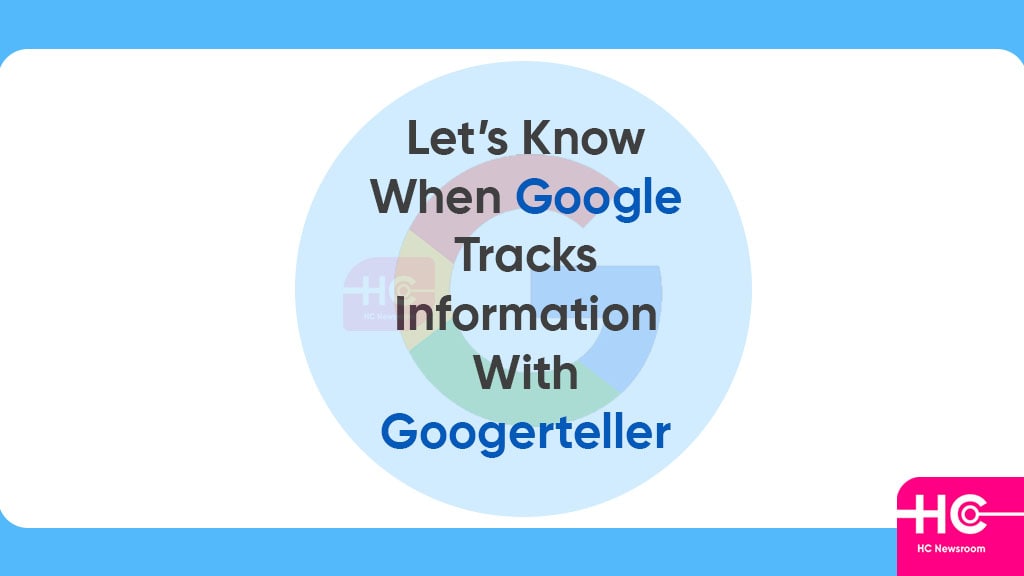
Yet, at the same time, the users need to understand what kind of information they are providing to the developers. So that they may not let them access such profiles that are quite confidential in nature.
How does the Googerteller work?
Bert shares his thought about the new application on his Twitter handle. He tweets that the newborn application is a simple tool that makes some alerts at the moment when your device sends data to Google. Further, he also attaches a demo video to illustrate the functioning of the application.
Googerteller uproots the Linux-based operating system and utilizes the IP addresses provided by Google on the public platform. These addresses are in link with several Google services. As a result, the moment your device will connect to any of the IP addresses, the app will notify you immediately.
Users who want to check how the new app works can install it from the link given below.
Download the Googerteller App
I made a very very simple tool that makes some noise every time your computer sends data to Google. Here a demo on the official Dutch government jobs site. The noise starts while typing the domain name already. Code, currently Linux only: https://t.co/ZjKeOSfYff pic.twitter.com/dEr8ktIGdo
— Bert Hubert 🇺🇦 (@bert_hu_bert) August 21, 2022
I made a very very simple tool that makes some noise every time your computer sends data to Google. Here a demo on the official Dutch government jobs site. The noise starts while typing the domain name already. Code, currently Linux only: https://t.co/ZjKeOSfYff pic.twitter.com/dEr8ktIGdo
— Bert Hubert 🇺🇦 (@bert_hu_bert) August 21, 2022
[Source]
Google, Android, Samsung, and all VS Apple: RCS #GetTheMessage War
Yash is a graduate of computer science and followed his way into journalism, he is interested in various subjects related to technologies and politics. Yash likes to listen classical songs and has a huge library of classical mixes.
Download Huawei Celia Keyboard [11.0.5.309]
Here’s how good Android 13 works on old Pixel devices
Google to bring Privacy Sandbox for Android 13 devices in 2023
Published
on
By
Google is rolling out a new Play Store version 33.2.12 for Android devices and it comes with a brand new app crash fix prompt feature.
Google Play Store 33.2.12 will greatly expand to smartphones, tablets, and other devices but you can download it right away from the link given below. However, people who want to wait will get it installed silently in the background.
This Play Store version also improves the overall performance of the system and provides a better user experience. 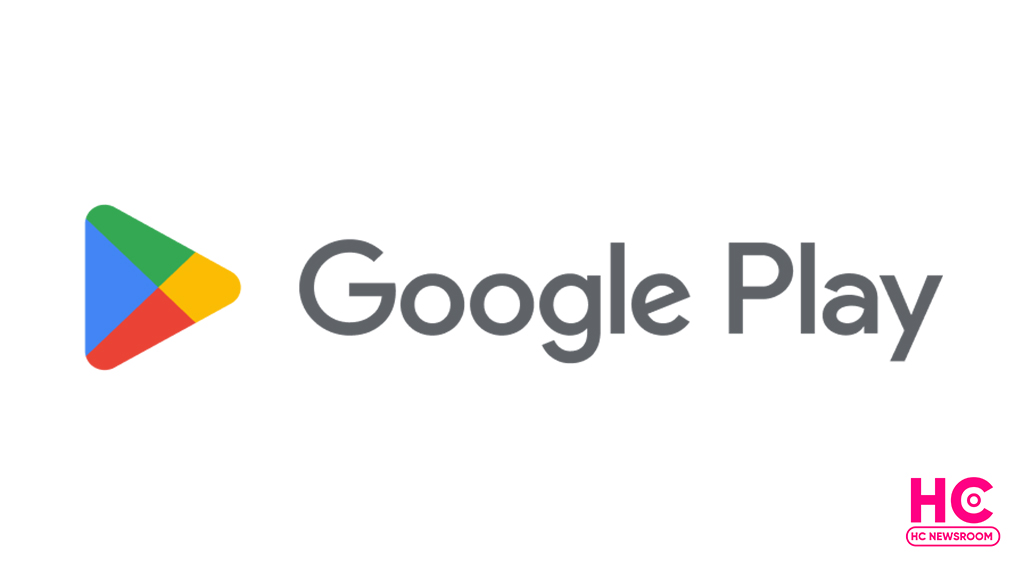
Google:
This week, Android has made a significant change in the Play Store and app ecosystem for smartphones and other platforms. For instance, if an app crashes, Play Store will prompt users to get the latest update for the app from Play Store. That’s a good improvement for Android phone owners and it’s rolling out with Play Store version 33.2. as mentioned above.
Android enthusiast, Mishal Rahman found relevant details in the Play Store Android code, including updating the app to fix crashes.
Such a message on app crash includes: “The app stopped working, but the latest update for the app may fix the issue. Install the update and then open the app again. If you want to update later, go to %1$s in Google Play.”
To be mentioned the latest changes in Play Store are released with the latest November 2022 Google Play System Update. There are other important optimizations and new features added to the app distribution platform.
These include better download and installation speed, optimizations for performance, bug fixes, and improvements to security, stability, and accessibility.
New formats for search results, update for game clusters views for Chromebooks, new kids menu on large screen Android devices, automatic updates over limited mobile data for Google Play apps for users who do not have regular WiFi access.
We suggest you look for the latest Play Store app software to get the new optimizations and app crash fix prompt feature.
Published
on
By
Google has finally launched the “Now in Android” application on the Play Store. The newly-released app will eventually ease the app development for the developers and will make the entire procedure more efficient.
As the name suggests, Now in Android offers a quick view of what other developers have recently done in the Android system. Besides, you can check the latest designs, new tools, and functions that are being added to the Android surface.
In addition, the app also covers a huge library of new releases, articles, videos, podcasts, samples, codelabs, and several other subjects relevant to Android developers. It brings UI, testing, and architecture details to developers so that they can complete an app development more effectively.
On the flip side, the app will help the developers to remain updated with the latest tweaks and pinches about Android in the technology world.
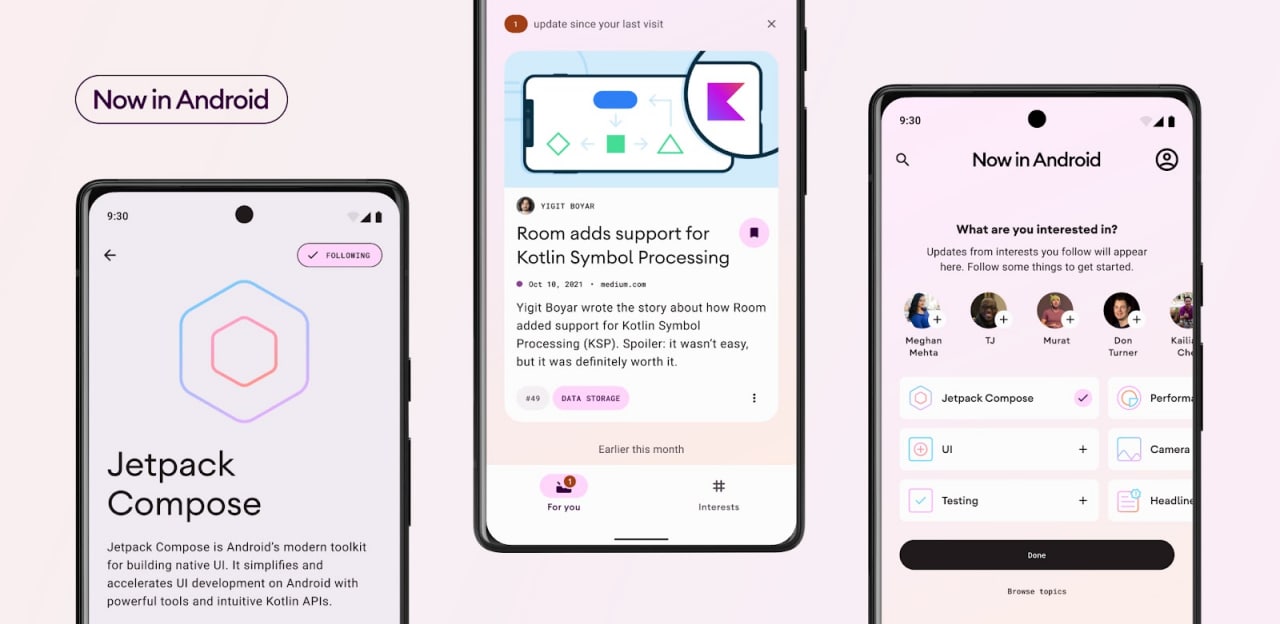
So far, the app was already present on Github. However, to increase the availability rate, Google introduced Now in Android to the Play Store. As a result, not only developers but users can also learn about Android and app development.
Ultimately, the US tech giant keeps on checking its developers’ and users’ needs. The company introduces such services and facilities that can meet their requirements. Consequently, Now in Android is such an initiation.
Extraordinary layout, just like Material You
Now in Android app reflects quite similar properties to the Material You on a design basis. On the other hand, the app also relates to the Compose Material Catalog and showcases extreme designs and layouts.
Alternatively, the app exhibits default and dark colorways and displays themes as per the wallpapers. Further, it features customized layouts corresponding to several screen sizes.
Significantly, Now in Android app is a functional Android app entirely built with Kotlin and Jetpack Compose. The app follows the new frameworks and modules which makes it capable of bringing the latest topics and details to developers. 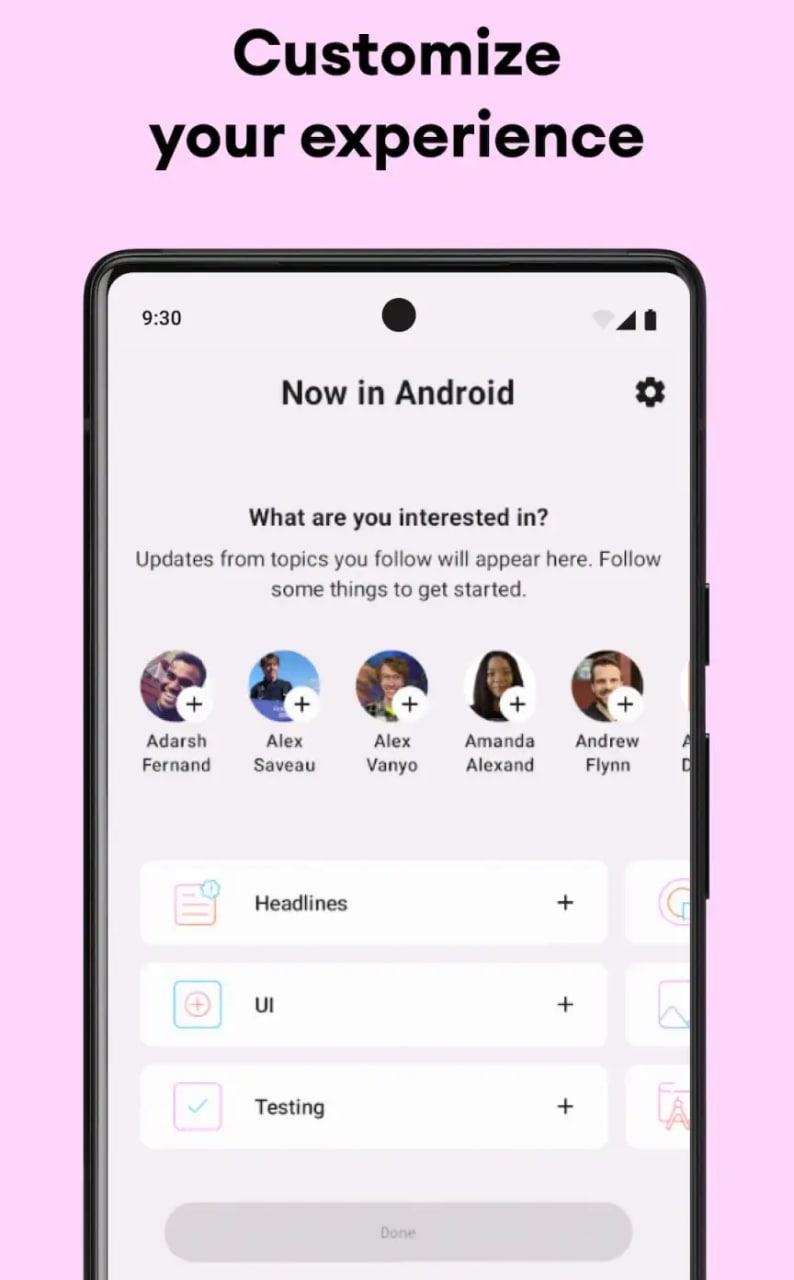
(Source)
Published
on
By
Google has announced the expansion of Play Store user billing alternatives test in the US and other markets. Eventually, the company mentioned that third-party apps can actively participate in this beta activity.
To those who are unaware, user choice billing enables Android app developers to use their own payment systems instead of Google’s. As a result, developers no more need Google’s in-built system to hold payment actions in their apps.
To be specific, users will have the choice to either use the Google Play Store’s in-app purchasing system or the developer’s payment system while buying in-app content (in supported countries).
The tech maker initiated the user choice billing beta tests in September. At that time, the company rolled out the pilot stage in Australia, EEA (European Economic Area), India, Indonesia, and Japan.
After the fruitful outcomes, Google Play Store has pushed off the user choice billing test in the US, Brazil, and South Africa. Alongside this, the latest expansion will make the user choice billing available in 35 regions worldwide.
Spotify – the first pilot tester
Further, Google informed that Spotify is the first third-party app that has begun billing alternative testing. Thereafter, the Bumble application also joined this recruitment process.
After the stable implementation, Android users will catch a new user interface on Spotify and other apps. This user interface will permit users to choose how they want to pay for monthly or other subscription packages. 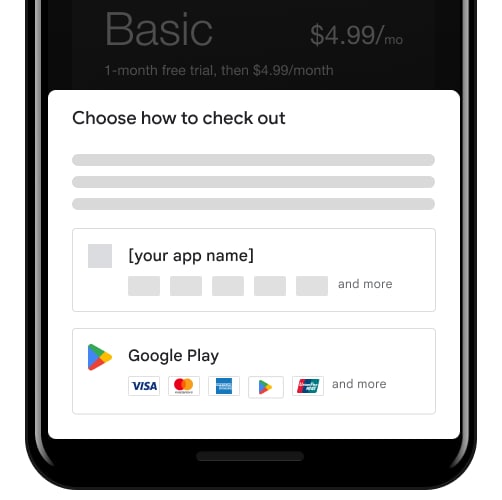
Requirements:
On the other hand, developers who want to adopt the user choice billing system in their applications, need to follow some major guidelines of Google. As per these regulations, developers must show separate screens for the billing options.
Further, the billing screen must be visible before every purchase. Aside, developers must fulfill the below-given requirements:
- Your app must be a non-gaming mobile or tablet app
- The developer must be a registered business
- Implement trust and safety requirements, and user experience guidelines when available
- Only offer user choice billing to mobile and tablet users in announced pilot countries
- Comply with the Payment Card Industry Data Security Standard (PCI-DSS) (if handling credit and debit card data)
To get more detailed information about these guidelines, click HERE.
According to Google’s words, this is just the beginning and the company will continue to expand the new billing alternative testing in more regions in the time ahead. 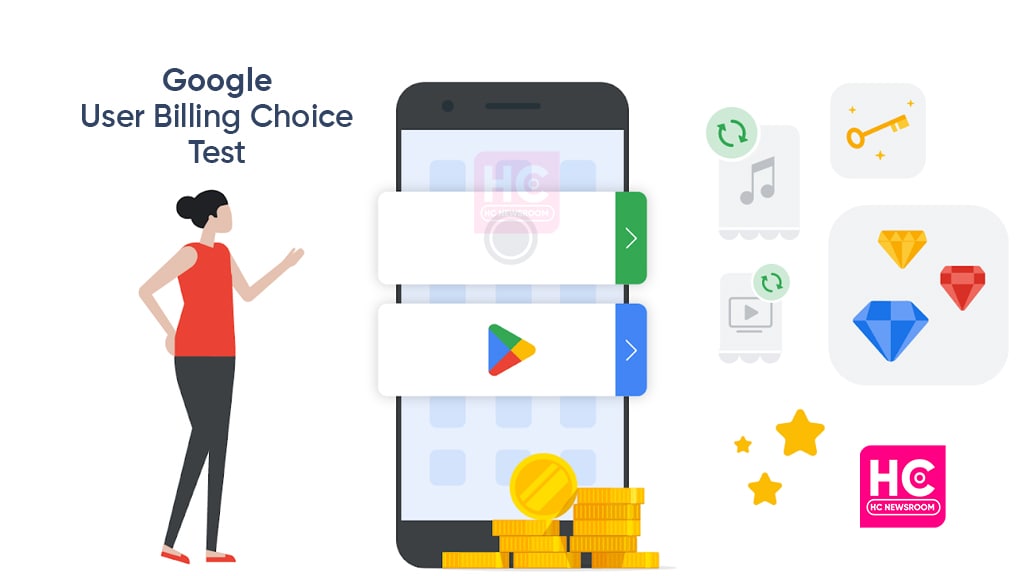
[Source]
Copyright © 2022 Huaweicentral.com